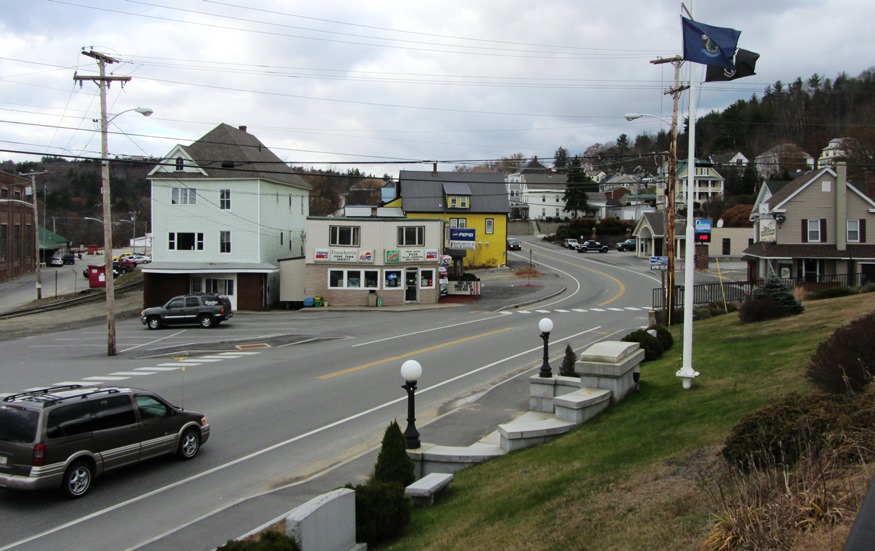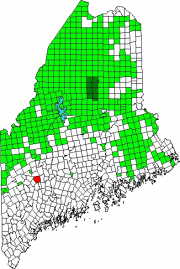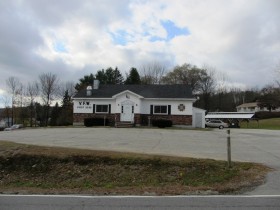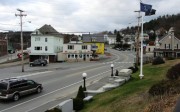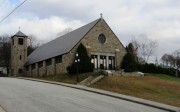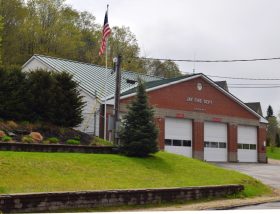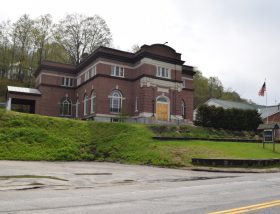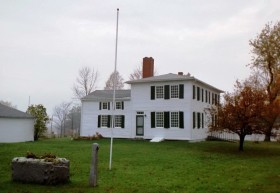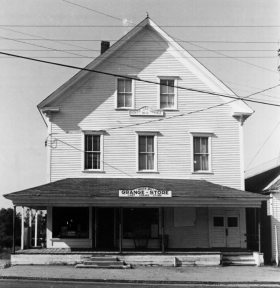| Year | Population |
|---|---|
| 1970 | 3,954 |
| 1980 | 5,080 |
| 1990 | 5,080 |
| 2000 | 4,985 |
| 2010 | 4,851 |
| Geographic Data | |
|---|---|
| N. Latitude | 44:32:06 |
| W. Longitude | 70:13:04 |
| Maine House | District 74 |
| Maine Senate | District 17 |
| Congress | District 2 |
| Area sq. mi. | (total) 49.2 |
| Area sq. mi. | (land) 48.5 |
| Population/sq.mi. | (land) 100.0 |
County: Franklin
Total=land+water; Land=land only |
|
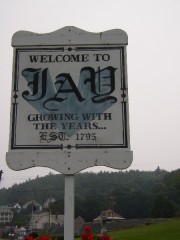 [JAY] a town in Franklin County, incorporated on February 26, 1795 from the former Phipps’ Canada Plantation and was named for the nation’s first Chief Justice of the Supreme Court, John Jay.
[JAY] a town in Franklin County, incorporated on February 26, 1795 from the former Phipps’ Canada Plantation and was named for the nation’s first Chief Justice of the Supreme Court, John Jay.
Settlers began to arrive after the Revolutionary War. The area now Jay village, then known as Jay Hill, was settled in 1802 by James Starr.
According to the 1886 Gazetteer of Maine,
On the Androscoggin River in this town are three excellent water powers–the aggregate fall being about 36 feet. That near Jay Bridge is improved by a good dam, on which is a saw-mill. Jay Steam saw-mill has an engine of 150 horse-power. At North Jay is a saw-mill, a brick-yard and several granite quarries. Bean’s Corner has a carriage-factory, and East Jay has a saw-mill. The Farmington Railroad passes through the town, having a station at Jay Bridge and at North Jay. . . .
The population in 1870 was 1,490. In 1880 it was 1,291.
Both Jay and Livermore Falls, have been paper mill towns on the River since the 19th century.
In fact, Jay’s town line cuts through Livermore Falls village with little obvious effect. The VFW Post at right is just a few hundred feet north of Livermore Falls on Route 133.
Jay was the scene of an extended and bitter strike of workers against the International Paper Androscoggin mill there from June 1987 to October 1988.
All 1,200 striking union workers were permanently replaced and the strike was defeated.
At the time of the strike, the welcome sign had read: Welcome To Jay, INC. 1795, A Paper Making Town.” A sign on the same site in 2004 read “Growing with the years.”
The white granite for President Ulysses S. Grant’s tomb came from North Jay, whose quarries supplied granite for public buildings in major U.S. cities such as Chicago, Detroit, Pittsburgh, New York, and San Francisco. In North Jay workers organized two unions: the Granite Cutter’s in 1891 and the Quarrymen’s in 1902. In the Chisholm (mill) area the Laborer’s Protective Union was formed in 1901.
Fifteen miles south of Farmington on combined Maine Routes 4/17, Jay is also served by Routes 133 and 140.
Jay’s population has remained stable at about 5,000 for three decades.
Form of Government: Town Meeting-Select Board-Manager.
Additional resources
Cushman, Helen Caldwell. Horizons Unlimited: A History of Jay. Maine. The author. 1967.
Dalton, Pete. They Heard the Call: Contributions of Five Maine Towns in the Civil War. Union, Me. Union Pub. Co. 1995.
Getman, Julius. The Betrayal of Local 14. Ithaca, NY. Cornell University Press. 1998.
Kellman, Peter. Labor Papers. 1984-1996. [University of Maine, Raymond H. Fogler Library, Special Collections]
Lawrence, Benjamin F. History of Jay, Franklin County, Maine. Boston, Griffith-Stillings Press. 1912.
*Maine. Historic Preservation Commission. Augusta, Me. Text and photos from National Register of Historic Places: http://pdfhost.focus.nps.gov/docs/nrhp/text/xxxxxxxx.PDF and http://pdfhost.focus.nps.gov/docs/nrhp/photos/xxxxxxxx.PDF
Holmes-Crafts Homestead: 73000105.PDF (1973)
Jay-Niles Memorial Library: 87000414.PDF (1987)
North Jay Grange Store: 74000150.PDF (1974)
Moulton, Virginia Plaisted. A History of Jay, Maine from its Settlement as Phips, Canada. Camden, Me. Penobscot Press. 1995.
Varney, George J. A Gazetteer of the State of Maine. 1886. p. 290.
National Register of Historic Places – Listings
Holmes-Crafts Homestead
[Old North Jay Road, Maine Route 4] The c. 1820 Holmes-Crafts House is a fine example Federal style architecture built to withstand the rigors of a Maine winter and yet be comfortable. James Starr, who bought the property in 1820, was one of the area’s most prominent citizens. He was not only a lawyer and judge but a very capable surveyor. In 1802 he was the first settler of Jay Hill. In Jay Hill he was owner of the tavern that served as the stopover for the stagecoach heading north from Portland and Hallowell. He also operated the town’s first Post Office, which opened in 1814. Mr. Starr was a representative to the Massachusetts General Court, first elected in 1804.
In 1833, the property was, bought by Aruna Holmes, the husband of Starr’s daughter, Louisa. Holmes was a well known cabinet maker and had a two story cabinet shop attached to the ell of the house. A barn was attached to the shop. Both have since, been removed. At the death of Aruna in 1876, the property was inherited by his son, Henry, also a cabinet maker. Delia Holmes inherited the property in 1912 and sold it to Leroy Crafts in 1928. It is now home to the Jay Historical Society.*
Jay-Niles Memorial Library
[Maine Route 4 North Jay] Completed in 1918, the Jay-Niles Memorial Library is a memorial to Veranus and Mehitable Niles and to the memory of Jay’s Civil War veterans. It is also a reminder of the past and present commitment for having a public library for the citizens of North Jay. The Library was built at a time of economic recovery in the town. From a population of 1,686 persons in 1860, the Town fell to 1,291 inhabitants in 1880.
However, by 1920 there were 3,152 residents. In North Jay there was a Grange store, a general store, a dealer in horses, livestock and agricultural implements, a dry goods company, and an apple shipper and coal dealer. North Jay was also home to the Maine and New Hampshire Granite Corporation, I. C. Mayo and Son, stone contractors, and the North Jay Land and Lumber Company. There was, also a billiard hall, a garage and a number of fraternal orders.
Veranus Niles (1812-1893) had come to Jay as a young child with his widowed mother. He married Mehitable Harris (1805-1893) and established himself as a farmer and dealer in cattle and real estate. Two of his sons, Louville and S.H. Niles, founded the library in memory of their parents. It had been a wish of their sister Eliza Niles to provide a reading room in the community. Louville Niles’ ties in Boston led him to commission the Boston architectural firm of Prescott and Sidebottom design the library.
The library in North Jay represented a significant commitment to a public facility made by private initiative. This followed in the wake of a nationwide interest in public libraries beginning in the late 19th century, an interest fostered by gifts of steel-maker Andrew Carnegie.
A subscription library, in North Jay probably existed as early as 1850. In the mid-1870s the Jay Social Library was in operation. The duration of these two associations is unknown. The present library continued to function until the 1970s. It was unused until 1980 when the Town committed itself to repairing and maintaining the building and its collections.* [See photo above.]
North Jay Grange Store
[Maine Route 17 North Jay] The search for economic justice for farmers has been a difficult one and the road toward that goal is historically marked with signposts of failure. The Farmers Alliance, The Agricultural Wheel, The Brothers of Freedom and the Farmer’s Union- all represent brave but failing efforts to secure economic and social growth for rural people.
Alone in its success and still flourishing is the Grange or, to use its formal name, the Order of the Patrons of Husbandry. Originated by Oliver H. Kelley of Boston and later Minnesota, the National Grange was organized in December, 1873. It grew not only in the middle west where it began as an organization to combat the railroad monopolies, but in the east where its social aspects were as appealing as its agricultural side.
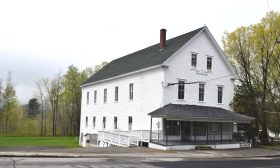
North Jay Grange Store (1974)
The grange in North Jay was only the 10th to be founded in Maine, which, in the 1970s, counted over 400 such groups. It was organized in 1874 and J.O. Keyes was chosen first master. The first grange hall was built in 1889 but was destroyed by fire in 1895. The members quickly replaced it with the present structure the following summer. The building was later remodeled to accommodate the store, which had been in existence since about 1882. When the Grange movement came into existence cooperative stores were established. Most were short lived and many brought disaster to those financially involved. As late as 1928 some sixty were still operating, the most successful in Maine were in Houlton, Portland and Turner Center. Of all the cooperative grange stores in Maine, and probably nationally, only the one at North Jay remained in the 1970s, operating as it did in the 19th century with a-molasses barrel, wheel of cheese and a virtually unlimited supply of agricultural goods. The North Jay Grange Hall and store stands as a symbol of an earlier day, still preserved in the rapidly disappearing rural landscape.* [Earle G. Shettleworth photo]


